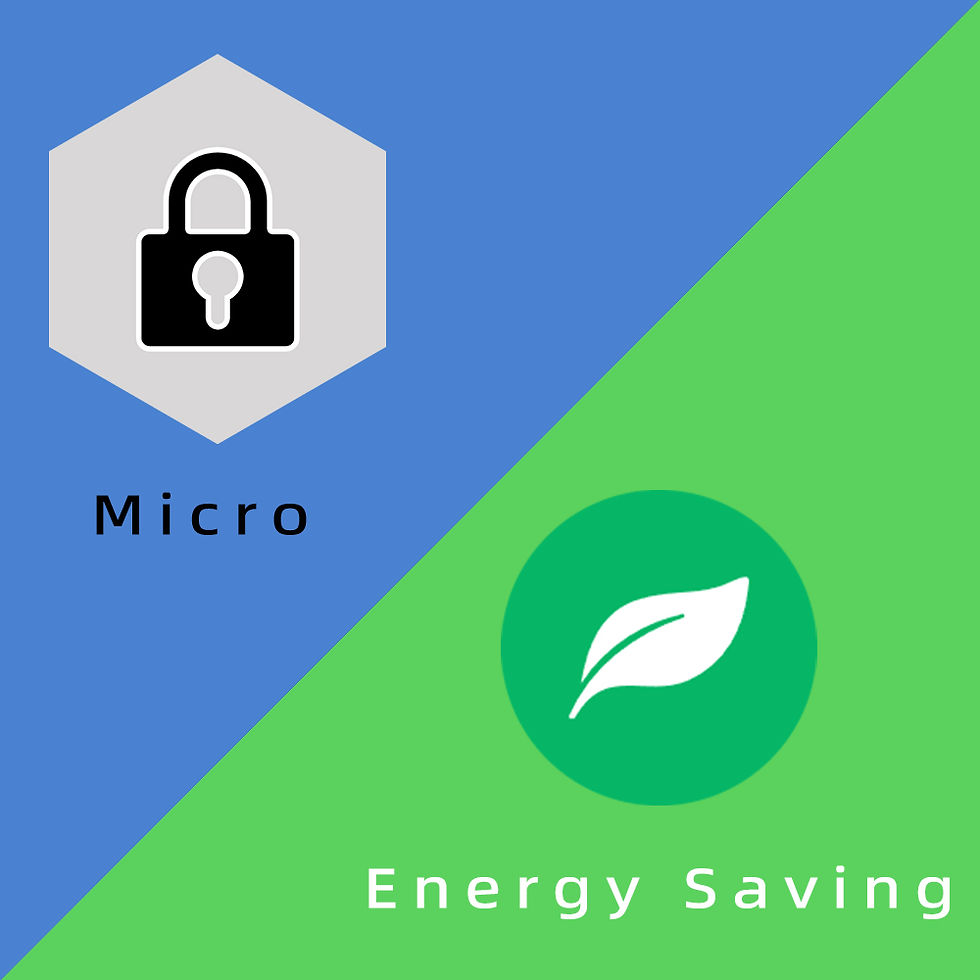The Environmental Revolution of Battery Free Design: The Sustainable Value of NFC Smart Locks and Industrial Locks
- Jul 9
- 4 min read

When environmental protection meets lock innovation: the breakthrough path of battery free design
In the severe situation where over 50 billion batteries are discarded worldwide every year, the environmental pollution problem of traditional battery locks cannot be ignored - a No. 5 battery can pollute 500 cubic meters of water, and frequently replaced batteries in industrial scenarios form an "invisible pollution chain". The NFC smart lock and industrial lock with battery free design are redefining the sustainable standards in the security field with the technological innovation of "zero power consumption".
Triple environmental protection core of battery free design: from pollution reduction to resource recycling

Zero battery pollution: cutting off the source of environmental hazards
1. Traditional electronic locks consume 4-6 batteries per year, while NFC passive locks are unlocked through the NFC function of mobile phones or electronic keys, completely eliminating battery waste pollution. Taking 1000 industrial locks as an example, a battery free design can reduce approximately 6000 discarded batteries per year, equivalent to safeguarding the water safety of three standard swimming pools.

Low energy production: geometric reduction in resource consumption
1. Battery free locks eliminate complex components such as battery compartments and circuit boards, reducing energy consumption in the production process by 37%. After replacing 100 passive electronic glass display cabinet locks, a certain jewelry brand reduced its annual carbon emissions by 2.1 tons compared to traditional locks, which is equivalent to the carbon absorption of planting 120 fir trees.
Ultra long lifecycle: from "consumables" to "durable assets"
1. The battery free design eliminates potential faults such as battery leakage and circuit aging, and has a mechanical lifespan of over 10 years. After adopting passive server cabinet locks in a data center in Germany, maintenance costs have decreased by 62%, and the lock replacement cycle has been extended from 3 years to 10 years, forming a sustainable model of "one-time investment, long-term environmental protection".
How can NFC technology reconstruct the sustainable logic of industrial security?
The application of NFC (Near Field Communication) technology in battery free locks is essentially a "wireless symbiosis of energy and data":
Power supply principle: When the electronic key or mobile phone is close to the lock, the NFC coil generates electromagnetic induction power supply, and the unlocking process only consumes 0.001Wh of energy (equivalent to the energy consumption of a mobile phone in standby mode for 1 second).
Intelligent management: Implement permission grading and unlock record tracking through an APP, replacing the extensive management of traditional mechanical keys. After a logistics company adopted NFC passive padlocks, the key loss rate decreased from 18% to 1%, reducing 23 security incidents caused by key duplication every year.
Industrial adaptation: In harsh environments such as dust and humidity, the battery free design avoids the failure of poor battery contact. After replacing the passive cam lock in a chemical enterprise, the equipment downtime for maintenance was reduced by 41%, and the production efficiency was significantly improved.
From commercial scenarios to industrial ecology: the value radiation of battery free locks
Green benchmark for commercial security
Jewelry stores and luxury counters use passive electronic glass locks, which not only meet the requirements of "no wiring and beautiful installation", but also comply with ESG certification requirements through the environmental attribute of "zero battery pollution". After a certain Italian jewelry brand incorporated passive locks into its store environmental protection system, the customer repurchase rate increased by 12% due to its "sustainable image".
The sustainable puzzle of Industry 4.0
In data centers and smart factory scenarios, passive industrial locks integrate with IoT systems to achieve full chain digitization of "device status energy consumption data security records". After replacing 300 passive rotary handle locks on a certain automobile production line, unnecessary unlocking operations were reduced through backend monitoring, resulting in an annual energy cost savings of approximately 87000 yuan.
Micro practice of circular economy
The modular design of battery free locks supports separate replacement of components. A certain cabinet lock brand has launched a "trade in" program, with a core component recycling rate of 89% for old locks. After reprocessing, it can be used for the production of new locks, forming a closed-loop ecosystem of "manufacturing use recycling".
When environmental protection becomes a competitive advantage: How can companies upgrade their battery free locks?
Cost estimation: Taking 100 industrial locks as an example, designing without batteries can save approximately 42000 yuan in battery procurement and maintenance costs within 3 years, with significant long-term benefits.
Scenario adaptation: Passive locks are preferred for scenarios such as distribution cabinets, server cabinets, and glass display cabinets, especially for projects with difficult wiring and high environmental requirements.
Brand empowerment: Incorporating "battery free environmentally friendly locks" into corporate ESG reports can serve as a highlight of green supply chains. After using passive locks, a cross-border e-commerce platform received additional points in Amazon's "Climate Friendly Commitment" certification.
Conclusion: The Sustainable Revolution of a Lock
From NFC smart locks to industrial passive locks, battery free design is rewriting the inherent understanding that 'security equals high energy consumption'. When the pollution of a battery can be avoided by technology and 10 years of maintenance free is possible, this "small and beautiful" innovation is the best footnote to sustainable development - after all, true safety has always been closely related to the future of the earth.




Comments